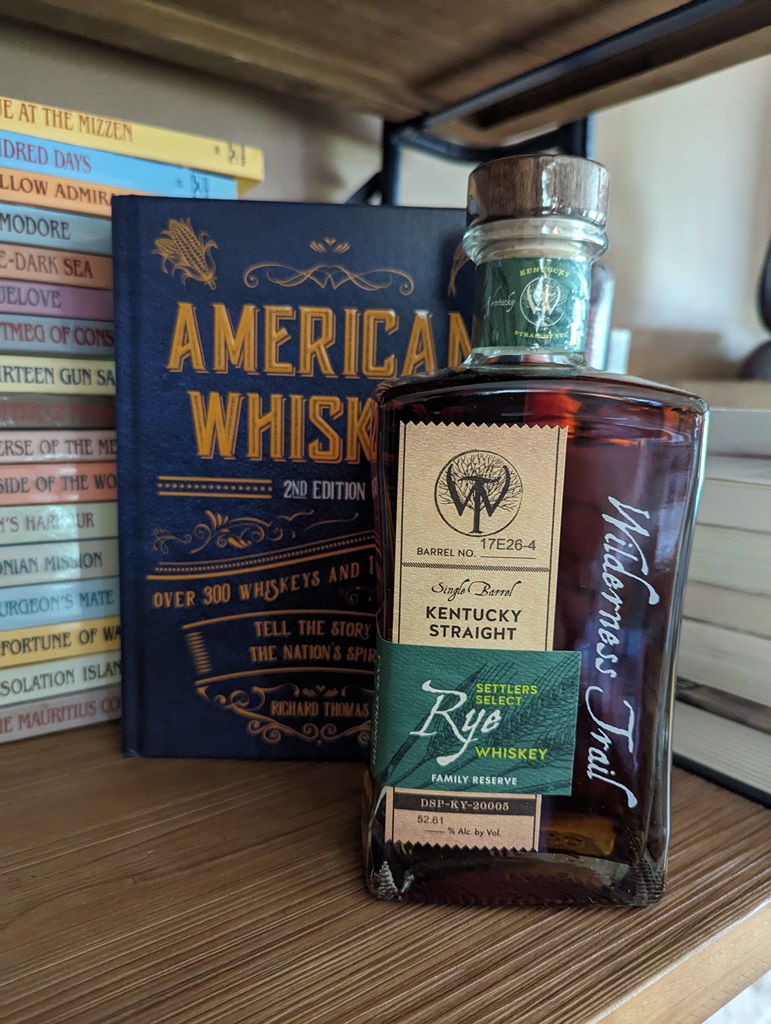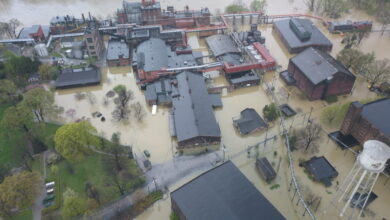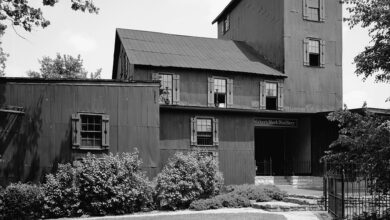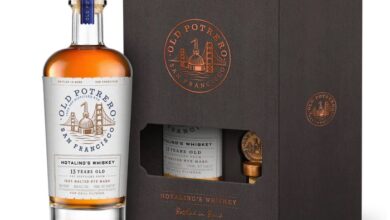Q&A With John Jeffery of Santa Fe Spirits
Interview With Craft Distilling Expert And Master Distiller John Jeffery
By Richard Thomas

(Credit: Santa Fe Spirits)
Although the American craft distilling boom is still a relatively new phenomenon, it already has some well-established figures, and by that I mean other than Chip Tate. John Jeffery was the head of a university distilling research program before moving over to work at one of the earliest craft whiskey distilleries, where he helped start the current trend in white whiskey.
Now he is the head distiller for Santa Fe Spirits in New Mexico, where he continues to experiment with new ideas in whiskey-making. Since the word “innovative” usually draws my attention, I made a point of having a chat with him about what’s cooking at Santa Fe Spirits.
RT: From your stint as head of R&D at Michigan State University’s Artisan Distilled Spirits Program, you had a hand in developing products for over 15 spirits companies. You were also Head Distiller at Death’s Door, whose white whiskey is the one many point to as the starter of the white whiskey trend. In all the past body of work, what whiskey are you the most proud of?
JJ: I love questions like that because I get to be vague and talk for a long time. I’m not really a pick a favorite kind of guy. Colkegan here at SFS is my favorite blend that I’ve done because it’s given me the opportunity to work with completely unique flavors and aromas. The mixture of new and used American oak, the highly unusual climate creating unusual chemical byproducts all of it.
I loved DD White Whiskey after I was able to rework it at MSU. The DD guys came to me in part because they didn’t know what to do about it, The whiskey was cloudy and a bit musty. I changed the whole distillation style and rebuilt it with a basis in what we wanted the experience to be drinking it and people loved it. I’m hoping I’ll have a chance to go back and taste through some of the barrels I filled there. We put some whiskey into used bourbon, some into used rum barrels. There’s going to be some cool stuff in those in another couple of years.
I have some whiskey samples in my closets going back to MSU where we used really unusual production methodologies, some strange and some horrid, but they provided really valuable feedback on what can and should be done. I’ve got a bottle with a fraction that came out of an experimental distillation that we called the Hershey’s cut because for just a moment it tasted exactly like a chocolate bar. I’m a scientist. I have some foul smelling stuff from a Clostridia co-fermentation we tried. It was nasty but I learned a lot. My favorites in anything are the ones that give the most surprising information or offer something really novel. Colkegan as a blend is going to continue to change and evolve. We know what we want it to be but it needs more time. In the meantime we get to keep tweaking with each blend, adding a bit more of what we ultimately want each time, growing and evolving.
RT: I’ve read that you are aging your whiskey in a climate-controlled warehouse. Can you explain how that works and how you are using it? What climate variables are you seeking to control?
JJ: We control temperature and humidity. The humidity in the high desert here never goes above 40% for longer than a couple of hours and if you look at climatic trends in the big whiskey parts of the world they never really drop below 60%. We’re holding in the 50% range (that’s about as high as we can get) and vacilating down and back up. We hold temp high and let it drop from time to time. Our angel’s share on a 3yr old whiskey bbl is over 40%. It gives us some really cool properties in the whiskey but it sure is painful to see it all go. We’re always looking at things we can do to reduce the loss without diminishing the character of the whiskey.
RT: That sounds something like Buffalo Trace’s Warehouse X. Have you heard of that?
JJ: As a former researcher myself, Warehouse X and BT’s single oak project are both fascinating to me. The idea that a company would create something like that [and] publicize it, let the public see the data is totally impressive and I really hope they do. Our storage has some similarities in that we have unique conditions already and even in altering the ambient humidity and temp we’re still aging in an unusual environment.
We may have the ability to do a big expansion in the next few years and a big part of that would be the effort to have even more control than we currently do. High Desert whiskey is uncharted territory and having the opportunity to explore that is really exciting.

(Credit: Santa Fe Spirits)
RT: Your Colkegan Single Malt is a mesquite-smoked whiskey. Tell me about smoking your malt with mesquite. Do you do that yourself, and how does that work? What flavors come out of it?
JJ: The smoking is contracted out. Again looking at novel methods we love smokey whiskey, I’m a huge peat fan, but none of that speaks to New Mexico or high desert so in choosing mesquite the idea is to take the traditional methodology as a jumping off point and play with it. Mesquite smoke is much sweeter, it invokes camp fires and bacon, childhood for many of us. It is more approachable to those who don’t like peat and plays with the smoke theme without using the same notes. The mesquite is potent on the nose but the mildness of it on the pallet often surprises people.
RT: Even among whiskey enthusiasts, there are plenty of people who just don’t understand how making a proper white whiskey differs from a new make destined for barrel aging. How is Silver Coyote different from the run of the mill bottled white dog?
JJ: To me the difference is pretty straight forward. What you want to use as white whiskey has to be distilled much more cleanly. Whiskey for barrels has high concentrations of many compounds that are lovely after time in the barrel but harsh and chemical right off the still. Silver Coyote is distilled using rectification on the short brandy column we use for our apple brandy rather than the distilling it the way we do the Colkegan making it much sweeter and more floral akin in some ways to a tequila. I hope at some point white whiskey will be a normal spirits category the way silver rum is to gold. It’s just another way to express the grain and the style of the distiller.
RT: Do you have any new experiments in the whiskey vein cooking at Santa Fe Spirits?
JJ: For the Colkegan we’ve started pulling some Apple Brandy finished single malt out of our AB barrels. It has an amazing effect on the whiskey softening and rounding it out. Very cool. We’ll also have some experimental whiskies coming out over the next few years using unusual barrels like tequila to finish and tweak Colkegan.
I’ve started putting together whiskey liqueurs: Atapino Liqueur is Silver Coyote whiskey rested in oak with pine nuts and finished with a Ponderosa Pine resin syrup I make. This takes 2 of the trees most evokative of the region and expressing them in a whiskey. I’ve got plans for 2-3 more whiskey liqueurs like this one before 2015 is up.





One Comment